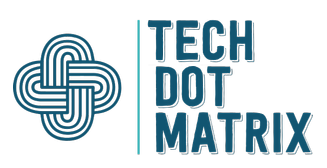
Companies who want to succeed in the dynamic world of digital marketing must master the subtleties of Search Engine Optimization (SEO). Insights regarding website performance, user behavior, and marketing efficacy can be gleaned from SEO analytics, which act as a compass in the digital desert. However, this gold mine of information usually comes with its own set of problems.
Envision staring at spreadsheets crammed with rows of numbers, charts depicting shifting patterns, and complex data sets that seem impossible to decipher. We’ve all been there as digital marketers, trying to make sense of the stats and figure out how they pertain to our campaigns. At this crossroads, data visualization becomes a beacon of hope. Here are the most effective SEO Tips to grow a small business.
With so much data available today, data visualization is essential for making sense. It enables the distillation of complex data into narratives that are more approachable and reveal previously unseen patterns and trends. As we delve into the potential of data visualization in SEO analytics, we’ll find out what it’s good for, how to use it in our plans, and how it will affect the future of digital advertising.
Explore the fascinating realm of data visualization, where facts become stories and the ostensibly tricky world of SEO statistics becomes clear.
Understanding Data Visualization in SEO
Data visualization is invaluable in deciphering the secrets of SEO analytics. Data visualization begins with the transformation of unstructured information into more digestible visual formats such as graphs, charts, maps, and infographics. These visuals let analysts and marketers swiftly process massive amounts of data and draw actionable insights. While understanding SEO you should also check if your SEO Firm is Helping You or Hurting You.
What is Data Visualization in the Context of SEO Analytics?
Can you imagine: A straightforward and colorful graph shows the evolution of your website’s keyword rankings over time, saving you the trouble of poring over rows and column numbers. The ascending and descending lines graphically represent your SEO efforts’ success or failure. Data visualization in SEO analytics boils down to providing a visual representation of numerical information that can tell a story on its own.
The Role of Visualizations in Presenting SEO Data
Different types of visual representations are used to convey different aspects of SEO performance. Keyword rankings tend to fluctuate over time, but by using line graphs, we can see these shifts and uncover trends. Using a pie chart, you may quickly see the many sources of your site’s visitors. Heatmaps are a great way to see which portions of your websites get the most attention.
Advantages of Data Visualization in SEO Analytics
In the ever-evolving and data-driven world of digital marketing, the advantages of adopting data visualization tools for SEO analytics are enormous and revolutionary. These benefits go beyond mere aesthetics and touch on the heart of interpreting and using the data at our disposal.
Simplifying Complex Data Sets
SEO analytics tools generate a pile of data that can be overwhelming, even for seasoned marketers. If the information is just provided in its unprocessed form, we can be completely overwhelmed. Data visualization has helped us see through the clutter. Data visualization simplifies the discovery of essential patterns, outliers, and connections by transforming complex data sets into straightforward visual formats.
Envision seeing precisely when a content strategy led to increased organic traffic to your website. These turning points are made clear through visuals, providing helpful insights without extensive data research.
Efficient Monitoring of Key Performance Indicators (KPIs)
Key performance indicators (KPIs) for search engine optimization (SEO) include clicks and conversions to bounce rates and backlinks. The procedure is simplified by data visualization. Instead of spending time poring over spreadsheets or reports, marketers can get a rapid snapshot of KPI health via visuals. In a flash, you can see whether your efforts are paying off from bar graphs, line charts, and progress trackers.
Transforming Numbers into Compelling Narratives
Modern digital life is so fast-paced that people have short attention spans. The art of data visualization draws on the effectiveness of narrative to convey information. If done right, a visualization can capture your website’s rise from obscurity to recognition and convey that story in a compelling visual format. When communicating triumphs and challenges, these visual narratives have a more significant impact on stakeholders.
Unlocking Insights for Informed Decision-Making
Data visualization is a treasure map, leading marketers to previously undiscovered insights. Insights that could have remained hidden are revealed through visual representations. Visualizing data allows marketers to make more educated decisions, whether that be the discovery of a surprising association between content kinds and engagement rates or the geographic origins of high-converting traffic.
Enhancing Collaboration and Communication
Open and honest communication lines are crucial in a team-based marketing setting. Data visualizations help teams comprehend and discuss data trends, regardless of language obstacles or technical jargon. Visualizations facilitate outstanding communication and alignment, whether you’re presenting to clients or discussing plans with coworkers.
In the following sections, we’ll look at the several options available for visually presenting SEO analytics data. To ensure your visualizations adequately express information, we will investigate the technologies that make their production possible. As we progress, the union of facts and aesthetics will merge into a formidable engine for propelling your SEO campaigns forward.
Are you prepared to make your SEO strategy future-proof? Learn the impact AI, voice search, and social media have on search engine optimization.
Types of Data Visualizations for SEO
Success in the ever-changing digital marketing world hinges on distilling complex SEO metrics into actionable insights. With the help of data visualization, a range of graphical tools can turn raw data into visual storytelling, allowing marketers to identify patterns, opportunities, and threats quickly. Let’s look at some of the most essential data visualization types for SEO analysis.
Line Graphs for Tracking Trends
Data visualization is only as good as its weakest link, and line graphs are the backbone of SEO analytics. They show clearly how different measurements have changed throughout time. Imagine seeing the ups and downs of your website’s keyword ranks over months and being able to attribute those changes directly to your SEO efforts. Line graphs are essential to identify patterns, monitor development, and evaluate the results of optimization efforts.
Bar Charts for Comparisons
When it comes to presenting comparable statistics, bar charts shine. You can use them to evaluate the effectiveness of various periods, content genres, and keyword groups. Using a bar chart, you may compare organic traffic in two quarters or illustrate which blog posts got the most comments. These visuals make it easier to make decisions by highlighting strengths and weaknesses. You should write SEO-optimized blog posts that will surely get millions of visitors and a good position in the search results
Pie Charts for Distribution Analysis
Pie charts are helpful because they visually dissect a whole into its constituent parts. In search engine optimization (SEO), they help visualize how different types of traffic organic, direct, referral, and social—are distributed. In a single glance, you can see which marketing efforts are most responsible for driving visitors to your site, allowing you to manage resources better and set priorities.
Heatmaps for User Behavior
The field of user behavior analysis is explored via heatmaps. They display a visual representation of how visitors navigate your website. Finding popular spots might help you learn more about your audience’s tastes and habits. This data is used to direct website improvements, ultimately leading to a better-tailored user experience.
Scatter Plots for Correlations
Potential relationships between two variables can be seen in a scatter plot. Scatter plots can examine correlations between content length and user engagement with your site. By highlighting positive or negative associations, content tactics can be fine-tuned to suit user needs better.
Geographic Maps for Location-Based Insights
The origins of your website’s visitors can be seen on a geographical map. These maps show where interaction is most, which helps zero in on specific populations. Geographic data can influence localized search engine optimization (SEO) in several ways, including creating region-specific content and using geo-targeted keywords.
Funnel Visualizations for Conversion Paths
Conversion paths can be visualized as a “funnel,” which follows a user through each step. Funnels show the points at which customers abandon a process, such as subscribing to a newsletter or completing a purchase. This data is crucial for locating stumbling blocks in the user flow and adjusting tactics to boost conversion rates.
As we explore the world of SEO data visualization, remember that the representation you use should correspond to the information you hope to glean. You may boost the success of your SEO efforts by making more educated judgments based on the information revealed by a combination of these visualization kinds. Following this, we will discuss methods for producing such visualizations and techniques for telling compelling tales with data.
Tools for Creating SEO Data Visualizations
Data visualizations for SEO analysis can be helpful, but only if you have access to the correct tools for the job. Look at some well-known data visualization tools that help marketers turn complex data into engaging visual narratives.
Google Data Studio
For those already familiar with the Google ecosystem, Google Data Studio is the obvious choice as a free data visualization tool that works well with other Google products.
Features and Capabilities:
- Provides several chart, graph, and table customization possibilities.
- Allows for simultaneous report editing by several people in real time.
- Connects seamlessly with other Google products, including Analytics, Ads and Sheets.
- Allows for dynamic study of data via clickable graphs and filters.
Because it does not cost much money and it has an intuitive interface, Google DFata Studio is ideal for beginners. Since it’s free, it is a great option for any marketer who needs to quickly generate some basic charts.
Tableau
Tableau is a powerful data visualization solution that can meet the needs of even the most complicated corporations and organizations.
Features and Capabilities:
- Provides numerous methods of displaying data, from simple charts to complex dashboards.
- It allows you to merge data from many sources into a cohesive whole.
- Offers sophisticated analytics tools for evaluating data in great detail.
- Provides both local installation and cloud-based services as deployment options.
The powerful features of Tableau have a more complicated learning curve. Tableau Public is free, but the entire functionality requires payment, making it more suitable for large enterprises with more intricate data needs.
ChartMogul
ChartMogul is an analytics and insights platform tailored to the needs of subscription-based organizations.
Features and Capabilities:
- Subscriber metrics like Monthly Recurring Revenue (MRR), churn rates, and customer lifetime value are the primary indicators of success.
- Supports smooth data extraction from subscription billing services like Stripe and PayPal.
- Provides subscription-based dashboards and reports for tracking company vitals.
With ChartMogul, subscription analytics are streamlined and simple for organizations operating in the subscription economy. There is a cost involved wherein various tiers of services are offered to accommodate varying volumes of data transfer and feature requirements.
SEMrush
In addition to its well-known functions as an SEO and digital marketing platform, SEMrush also provides data visualization tools that may be utilized to create compelling presentations regarding marketing insights.
Features and Capabilities:
- Includes SEO metrics, backlink analysis, and competition information in user-created dashboards.
- Features pre-made report formats to save time.
- Works perfectly with the other digital marketing tools offered by SEMrush.
SEMrush’s cost-effective and user-friendly data visualization features are ideal for marketers who want to present a fusion of search engine optimization (SEO), paid advertising (PPC), and content analytics. Plan and feature selection determines the final cost.
Power BI from Microsoft
Data visualization and analytics are just two of the many features offered by Microsoft’s Power BI, a business intelligence application.
Features and Capabilities:
- It provides numerous options for connecting to other data sources.
- Allows stakeholders to access and engage with shared dashboards and information.
- It allows you to see patterns and trends in your data with the help of artificial intelligence.
- Supports deployment in the cloud as well as locally.
Power BI is a relatively low entry price and has an easy-to-use interface, although its more advanced functions may require some training. Different plans and consumption thresholds result in varying price points.
Consider your budget, the intricacy of your data, and your level of comfort with the tool’s UI while making your decision. The tools mentioned above are uniquely suited to specific analytical tasks and user skill sets. Using these resources, you may refine your digital marketing tactics by transforming raw SEO data into eye-catching visual works of art.
Conclusion
The power of data visualization has emerged as a beacon of clarity and insight in the ever-changing world of digital marketing, where data acts as the compass directing our plans. Understanding the transformative power of transforming complex data into captivating visual storytelling has been a significant takeaway from our exploration of data visualization in SEO analytics.
As we’ve seen, data visualizations simplify complexity, provide efficient insights, and unleash narratives that influence tactics. This has been true from the beginning when we began to grasp visualization as a means of simplifying technical SEO metrics, all the way to our current exploration of its various advantages. We’ve explored various visualizations to assess our SEO effectiveness, from monitoring trends and user behavior to interpreting correlations and conversion funnels.
As we wrap up our investigation, it’s clear that data visualization is about more than just pretty pictures. It improves our capacity to learn things that propel our tactics forward. Data visualizations may help teams and stakeholders better understand and communicate with one another by turning numbers into stories.
To make lasting change, it is important to go beyond the numbers, and data visualization can facilitate this. We are well-equipped to shape the future of digital marketing as we go into this visually-driven era, thanks to our ability to decipher data and tell stories that make an impact in the ever-changing SEO landscape.
Remember the game-changing potential of data visualization as you negotiate the winding road of SEO analytics. Allow it to direct, motivate, and equip you as you advance your digital marketing. Search engine optimization (SEO) analytics has evolved from a realm of spreadsheets and figures to a narrative canvas where data is transformed into art, insights are revealed, and goals are reached.
Do you wish to learn more about technological insights? Click here right away! Learn about the most recent technological developments. We’re a click away if you’re interested in working with us or want to talk tech. Let’s get in touch and explore the world of technology together!
You might also like our TUTEZONE section which contains exclusive tutorials on how you can make your life simpler using technology.
Author’s Bio:

Paul Meñez was a freelance interior designer turned graphic artist and audio-video editor. He went into full-time NGO work for more than ten years and found his passion for outreach work, specifically for underprivileged children and youth. He has traveled around the Philippines and Asia on different outreach efforts, even with his wife and three kids. He is currently based in the Philippines, doing freelance graphic design and video editing while writing for Softvire. He is also preparing to jumpstart his organic farm on his hometown island soon.




